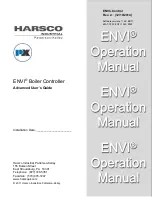
Transceiver module type
Connector head
Gigabit SFP optical transceiver
module
1G and 10G SFP copper
transceiver module
RJ-45
(1G requires Cat5e. 10G requires
Cat6A for maximum supported
distances.)
NOTE:
• The available transceiver modules and network cables vary by device models and are subject
to change over time. For the most up-to-date list of transceiver modules and network cables,
contact your Aruba sales representative or technical support engineer.
• For information about the transceiver modules and network cables available for each device
model, see the Datasheets or QuickSpecs for the applicable switch product. Refer to the
tables within this guide for the specific switch model.
Data rate
Data rate is the number of bits transmitted per second. The unit of measure for data rate is Megabits per
second (Mbps) or Gigabits per second (Gbps). Optical transceiver modules available for products provide the
following levels of data rates:
• 100 Gbps
• 40 Gbps
• 25 Gbps
• 10 Gbps
• 1000 Mbps (also known as Gigabit)
• 100 Mbps
Transmission distance
The transmission distance of optical transceiver modules is divided into short and long-range types. A
distance of 2 km (1.24 miles) and below is considered a short-range type. A distance of 10 km (6.21 miles) is
considered a long-range type. Transmission distances provided by optical transceiver modules are limited by
certain loss and dispersion suffered during the transmission of fiber signals over fibers.
• Loss is the optical energy loss due to the absorption, dispersion, and leakage over the media when light
travels through optical fibers. This loss increases in direct ratio to transmission distance.
• Dispersion occurs mainly because light waves of different wavelengths travel at different rates over the
same medium. This causes different wave components of optical signals to reach the receiving end early
or late as the transmission distance increases causing impulse broadening. Impulse broadening makes
the signal values indistinguishable (data loss). Different wavelengths traveling down the same fiber are
called modes, and this data loss is known as intermodal dispersion.
Chapter 1 Overview
7







































